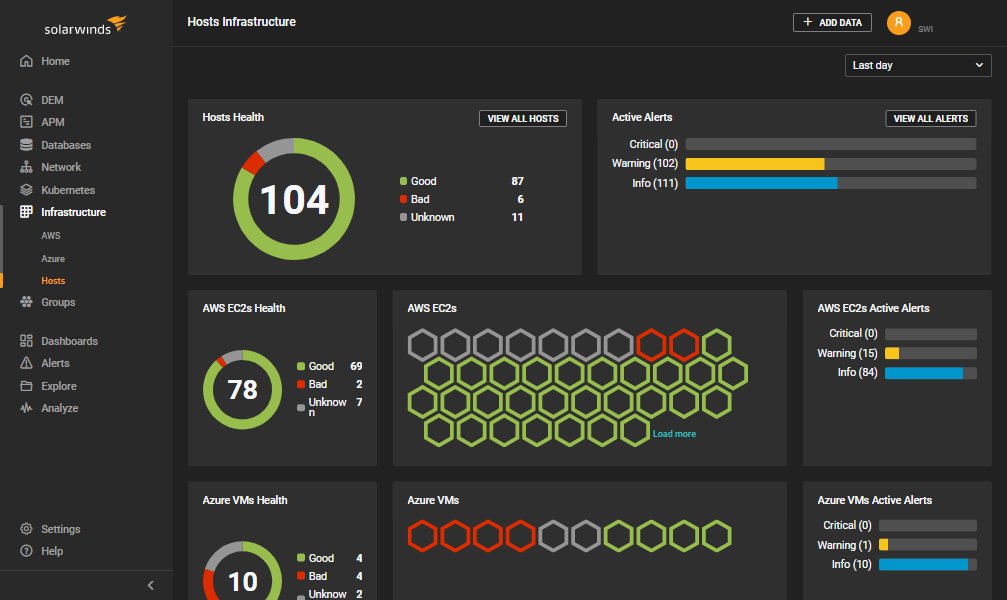 When it comes to keeping up with blogs and other websites, a common complaint is information overload. Even if you subscribe to receive site updates through an RSS reader, it’s easy to wind up with more items in your reader than you have time to actually read. You may still want to read some of those posts, but if you don’t want to read all of them, searching through your reader for the important news items can be almost as much of a burden as going from site to site.
When it comes to keeping up with blogs and other websites, a common complaint is information overload. Even if you subscribe to receive site updates through an RSS reader, it’s easy to wind up with more items in your reader than you have time to actually read. You may still want to read some of those posts, but if you don’t want to read all of them, searching through your reader for the important news items can be almost as much of a burden as going from site to site.
Because of the ongoing concern of information overload, many people who previously relied on RSS have drifted away from it. However, RSS readers are evolving to solve these issues and improve their usefulness.

 This April 1st the guys at Wired Magazine put together a great April Fools’ joke: A dedicated mobile device for Twitter dubbed the Wingman.
This April 1st the guys at Wired Magazine put together a great April Fools’ joke: A dedicated mobile device for Twitter dubbed the Wingman.





 Looking back on Android’s first year on the market, there’s no denying that things have been rocky for Google’s ambitious mobile platform. There was little hardware diversity for the better part of the year, and with the hype surrounding the release of the Palm Pre, Android seemed almost instantly dated. For all of its initial hype, the platform never really seemed like much of a threat to the iPhone, and in many ways it was barely competing. It seemed as if Android was going to celebrate its first birthday merely running on the fumes of excitement from its launch.
Looking back on Android’s first year on the market, there’s no denying that things have been rocky for Google’s ambitious mobile platform. There was little hardware diversity for the better part of the year, and with the hype surrounding the release of the Palm Pre, Android seemed almost instantly dated. For all of its initial hype, the platform never really seemed like much of a threat to the iPhone, and in many ways it was barely competing. It seemed as if Android was going to celebrate its first birthday merely running on the fumes of excitement from its launch. Do you understand your visitors? Simple information such as average length of visitor stay, peak traffic time, and a user’s navigation path is critical to webmaster success. Analyzing website traffic is not only interesting and fun, but can also boost profits and aid in delivering more relevant content.
Do you understand your visitors? Simple information such as average length of visitor stay, peak traffic time, and a user’s navigation path is critical to webmaster success. Analyzing website traffic is not only interesting and fun, but can also boost profits and aid in delivering more relevant content. Last week we made it possible for you to get
Last week we made it possible for you to get  Apple’s iPhone has been a massive success in the consumer smartphone sector. But can it mount a serious challenge to phones such as Research in Motion’s Blackberry in the business marketplace? It can, providing Apple is willing to make some changes.
Apple’s iPhone has been a massive success in the consumer smartphone sector. But can it mount a serious challenge to phones such as Research in Motion’s Blackberry in the business marketplace? It can, providing Apple is willing to make some changes.  Last week we learned that Microsoft had
Last week we learned that Microsoft had  The
The  Yesterday we announced that you can now
Yesterday we announced that you can now  Microsoft’s iPod competitor,
Microsoft’s iPod competitor, 
 While we were busy working,
While we were busy working,  The consensus is in on Windows Mobile 6.5: According to the likes of
The consensus is in on Windows Mobile 6.5: According to the likes of  When small companies and startups look for development tools, they often look to the open source community to cut down costs. Given the choice to spend nothing on licensing for a LAMP configuration compared to thousands of dollars in Microsoft licensing fees, it doesn’t take an MBA to realize why Apache’s market share is 46.6% compared to 21.9% for Microsoft IIS. Those numbers might be about to change thanks to a new Microsoft seed program,
When small companies and startups look for development tools, they often look to the open source community to cut down costs. Given the choice to spend nothing on licensing for a LAMP configuration compared to thousands of dollars in Microsoft licensing fees, it doesn’t take an MBA to realize why Apache’s market share is 46.6% compared to 21.9% for Microsoft IIS. Those numbers might be about to change thanks to a new Microsoft seed program, 
 When it comes to keeping up with blogs and other websites, a common complaint is information overload. Even if you subscribe to receive site updates through an RSS reader, it’s easy to wind up with more items in your reader than you have time to actually read. You may still want to read some of those posts, but if you don’t want to read all of them, searching through your reader for the important news items can be almost as much of a burden as going from site to site.
When it comes to keeping up with blogs and other websites, a common complaint is information overload. Even if you subscribe to receive site updates through an RSS reader, it’s easy to wind up with more items in your reader than you have time to actually read. You may still want to read some of those posts, but if you don’t want to read all of them, searching through your reader for the important news items can be almost as much of a burden as going from site to site. Not a week goes by without news about
Not a week goes by without news about  Last night, a routine maintenance of Sweden’s top-level domain .se went seriously wrong, introducing an error that made DNS lookups for all .se domain names start failing. The entire Swedish Internet effectively stopped working at this point. Swedish (.se) websites could not be reached, email to Swedish domain names stopped working, and for many these problems persist still.
Last night, a routine maintenance of Sweden’s top-level domain .se went seriously wrong, introducing an error that made DNS lookups for all .se domain names start failing. The entire Swedish Internet effectively stopped working at this point. Swedish (.se) websites could not be reached, email to Swedish domain names stopped working, and for many these problems persist still. One short blog post can have a major impact on how a business can be seen. One little tweet can convince thousands of customers to buy a product or to walk away from a company forever. Whether or not an employee’s online activities are sanctioned by his employer, even a little involvement with social media can have some extreme results.
One short blog post can have a major impact on how a business can be seen. One little tweet can convince thousands of customers to buy a product or to walk away from a company forever. Whether or not an employee’s online activities are sanctioned by his employer, even a little involvement with social media can have some extreme results. With the Internet growing rapidly over the years, the number of generic top-level domains (gTLDs) has increased from just a handful to about twenty, with many more proposed or in planning. Some, such as .com and .edu, have seen widespread adoption and are a useful contribution to the Internet. Others haven’t been quite as lucky. You could say they have flopped.
With the Internet growing rapidly over the years, the number of generic top-level domains (gTLDs) has increased from just a handful to about twenty, with many more proposed or in planning. Some, such as .com and .edu, have seen widespread adoption and are a useful contribution to the Internet. Others haven’t been quite as lucky. You could say they have flopped.



















